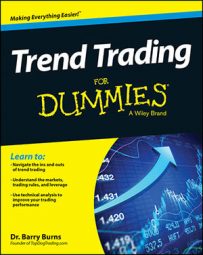Even people with no knowledge of trading or investing have likely heard the phrase buy low, sell high. The key to timing the market profitably is to buy a cycle low in an uptrend or short a cycle high in a downtrend.
The problem is how to determine, with high probability, that you’re entering on the final cycle high or the final cycle low so that the market doesn’t turn around and stop you out.
Although nothing can truly predict the future of the market, before the market turns off of highs and lows, the market often slows down before actually turning. This is called momentum shift. In this way, momentum often leads price. You can see this in momentum indicators turning down, while price is still moving up, or conversely, momentum indicators turning up while price is still moving down.
In this way, the stochastic indicator can often help you find the final high or low with extreme high probability.
Final low: When attempting to trade an uptrend, you want to buy a cycle low, but you want to get the lowest low before the market continues its move up, after a retrace (wiggle) against the trend. To do this with high probability, look for a momentum shift on the stochastic indicator — a divergence between price and %K.
As shown in the example, you see a lower low on price but a higher low on %K.
![[Credit: Figure by Barry Burns]](https://www.dummies.com/wp-content/uploads/448337.image0.jpg) Credit: Figure by Barry Burns
Credit: Figure by Barry BurnsFinal high: When attempting to trade a downtrend, you want to short a cycle high, but you want to get the highest high before the market continues its down move, after a retrace (wiggle) against the trend. To do this with high probability, look for a momentum shift on the stochastic indicator.
You see a higher high on price but a lower high on %K.
![[Credit: Figure by Barry Burns]](https://www.dummies.com/wp-content/uploads/448338.image1.jpg) Credit: Figure by Barry Burns
Credit: Figure by Barry Burns
Not every cycle low or high has such a divergence pattern on the stochastic indicator, but when you do see them, know that they’re high-probability signals.
This alone doesn’t make a great trade. Cycles give you information only about timing. They don’t give you information about direction (trend does that of course) or how far you expect a move to follow through after you get in.

